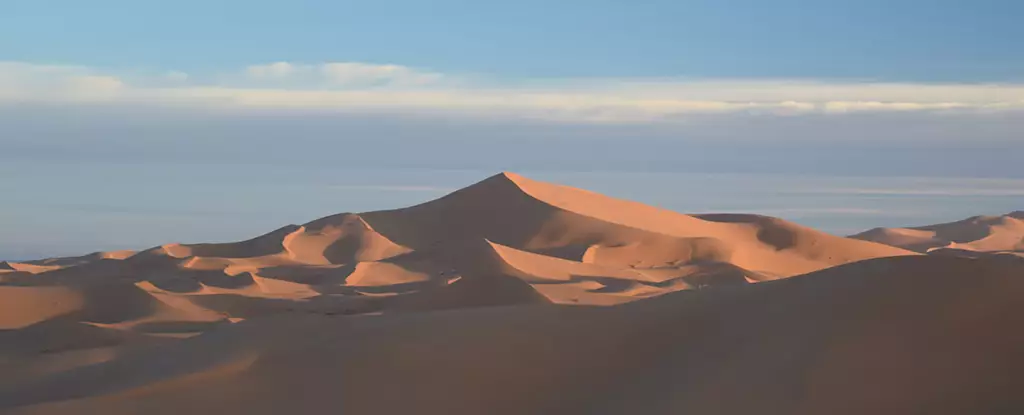The existence of giant star-shaped sand dunes in modern deserts has puzzled scientists for years, especially considering that only one such dune has been identified in the geological records, dating back more than 250 million years in north-east Scotland. This is surprising, given that these unique dunes can be found in various deserts across the globe, as well as on extraterrestrial bodies like Mars and Saturn’s moon Titan. A recent study conducted by researchers from University College London and Aberystwyth University sheds light on this mystery, suggesting that the lack of identification of star dunes in sedimentary rock may be due to a lack of knowledge about what to look for.
The Discovery of Lala Lallia Dune
The researchers focused their analysis on the Lala Lallia dune in southeast Morocco, which stands at an impressive height of 100 meters with radiating limbs spanning 700 meters. By using a mineral dating technique to determine the age of sand grains deep within the dune, the researchers estimated the base of the dune to be around 13,000 years old. Surprisingly, the upper portion of the dune had formed over the last thousand years, indicating rapid formation and movement. The dune is also shifting westward at a rate of approximately 50 centimeters per year, providing valuable insight into the formation and movement of star dunes.
The study revealed that star dunes are primarily created by shifting wind patterns, with the largest known dune on Earth towering at 300 meters in the Badain Jaran Desert in China. Despite their prevalence, there have been limited studies conducted on star dunes, presenting a challenge for researchers to identify them in the geological record. The researchers hope that their findings will enable geologists to recognize these unique desert features in sedimentary rock, using techniques such as ground-penetrating radar to unveil the secrets of star dune formation.
Professor Geoff Duller from Aberystwyth University emphasizes that the research on the Lala Lallia dune is crucial in unraveling the mystery of missing star dunes in the geological record. By developing a new model based on their analysis, the researchers aim to guide geologists in identifying star dunes that may have been overlooked due to a lack of understanding of their size and patterns. With advancements in technology, such as ground-penetrating radar, researchers can now delve deeper into the rock record and uncover the secrets of these enigmatic desert formations.
The study of star dunes like Lala Lallia in Morocco provides valuable insights into the formation and movement of these unique geological features. By bridging the gap between modern desert landscapes and the geological record, researchers are paving the way for a better understanding of star dunes and their significance in Earth’s history. With continued advancements in technology and research methods, the mysteries of giant star-shaped sand dunes may finally be unraveled.


Leave a Reply